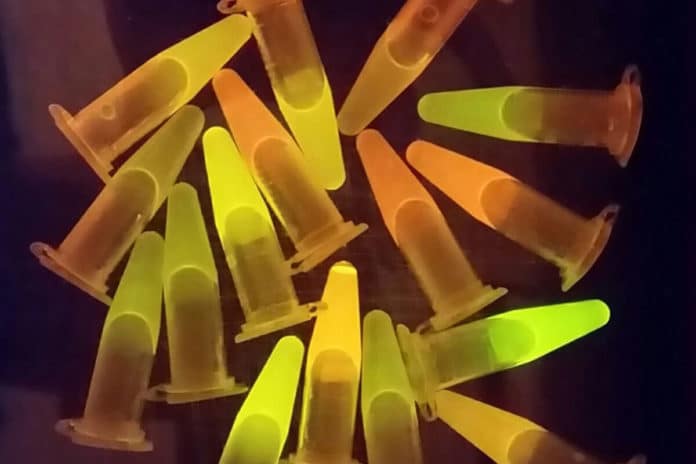Medicines such as insulin for diabetes and clotting factors for hemophilia are mainly based on therapeutic proteins and are challenging to synthesize in the lab. Thus, scientists engineered bacteria into tiny protein-making factories. However, even with the help of bacteria or other cells, the process of delivering proteins for therapeutic or commercial applications is difficult and expensive.
Now, scientists at the Washington University School of Medicine in St. Louis come up with a new way of supercharging protein production. This way could optimize output and lessen the costs of making certain protein-based drugs, vaccines, and diagnostics, as well as proteins used in the food, agriculture, biomaterials, bioenergy, and chemical industries.
Proteins are composed of chains of amino acids, hundreds of links long. During the study, scientists changed the sequence of the first few amino acids by thinking it would not affect protein expression, but instead, it increased protein expression by 300%. They then started to get detailed insights into why that happened.
Scientists used green fluorescent protein to estimate the amount of protein in a sample by measuring the amount of fluorescent light produced. They randomly changed the sequence of the first few amino acids in the green fluorescent protein, generating 9,261 distinct versions, identical except for the very beginning.
Scientists observed that the different versions of green fluorescent protein varied a thousandfold from the dimmest to the brightest. This indicates a large difference in the amount of protein produced.
With careful analysis and further experiments, scientists identified certain combinations of amino acids at the third, fourth, and fifth positions in the protein chain that gave rise to sky-high amounts of protein.
Interestingly, the triplets of amino acids not only increased the green fluorescent protein production but also increased the production of proteins from distantly related species like coral and humans.
Sergej Djuranovic, associate professor of cell biology and physiology and the study’s senior author, said, “There are so many ways we could benefit from ramping up protein production. In the biomedical space, there are many proteins used in drugs, vaccines, diagnostics, and biomaterials for medical devices that might become less expensive if we could improve productivity. And that’s not to mention proteins produced for use in the food industry – there’s one called chymosin that is very important in cheese-making, for example – the chemical industry, bioenergy, scientific research, and others. Optimizing protein production could have a broad range of commercial benefits.”
Journal reference:
- Manasvi Verma, Junhong Choi, Kyle A. Cottrell, Zeno Lavagnino, Erica N. Thomas, Slavica Pavlovic-Djuranovic, Pawel Szczesny, David W. Piston, Hani S. Zaher, Joseph D. Puglisi, and Sergej Djuranovic. A short translational ramp determines the efficiency of protein synthesis. Nature Communications, 2019; DOI: 10.1038/s41467-019-13810-1
